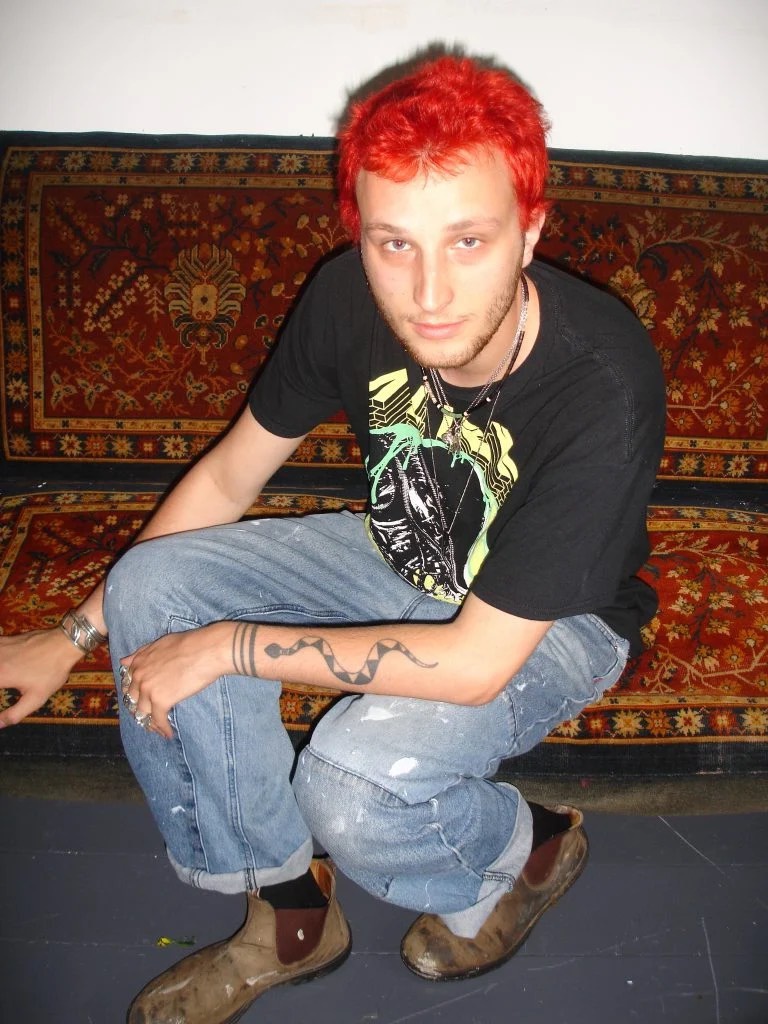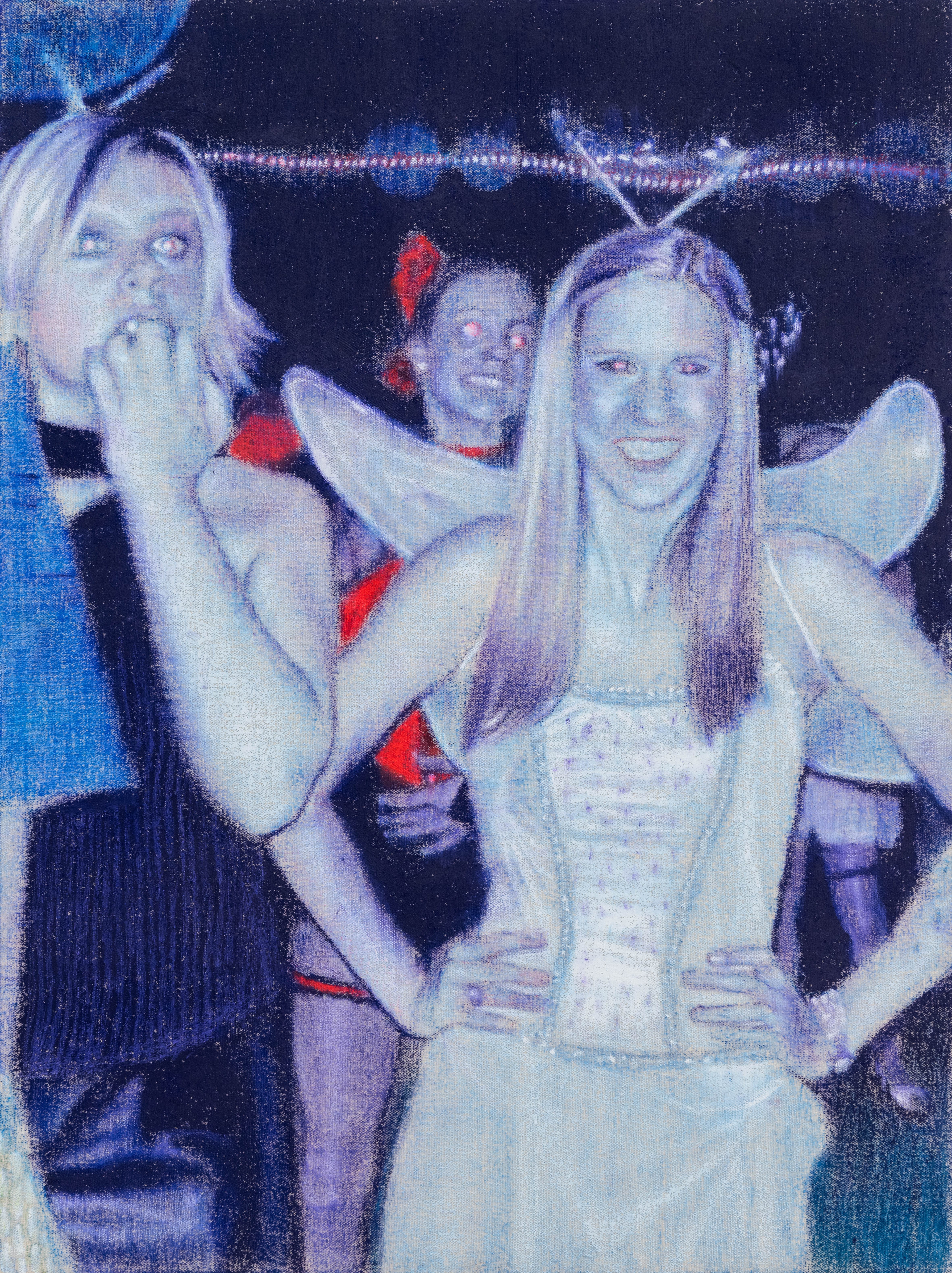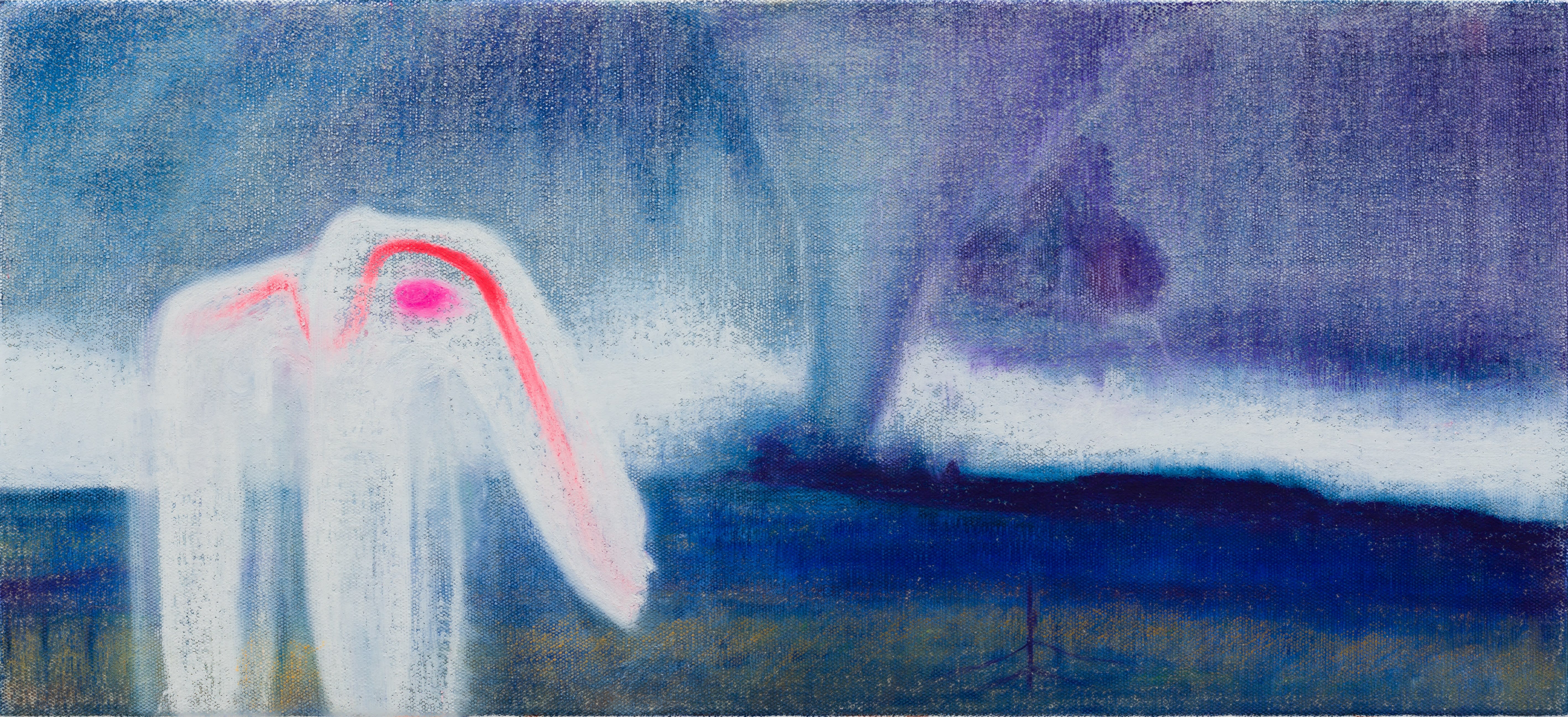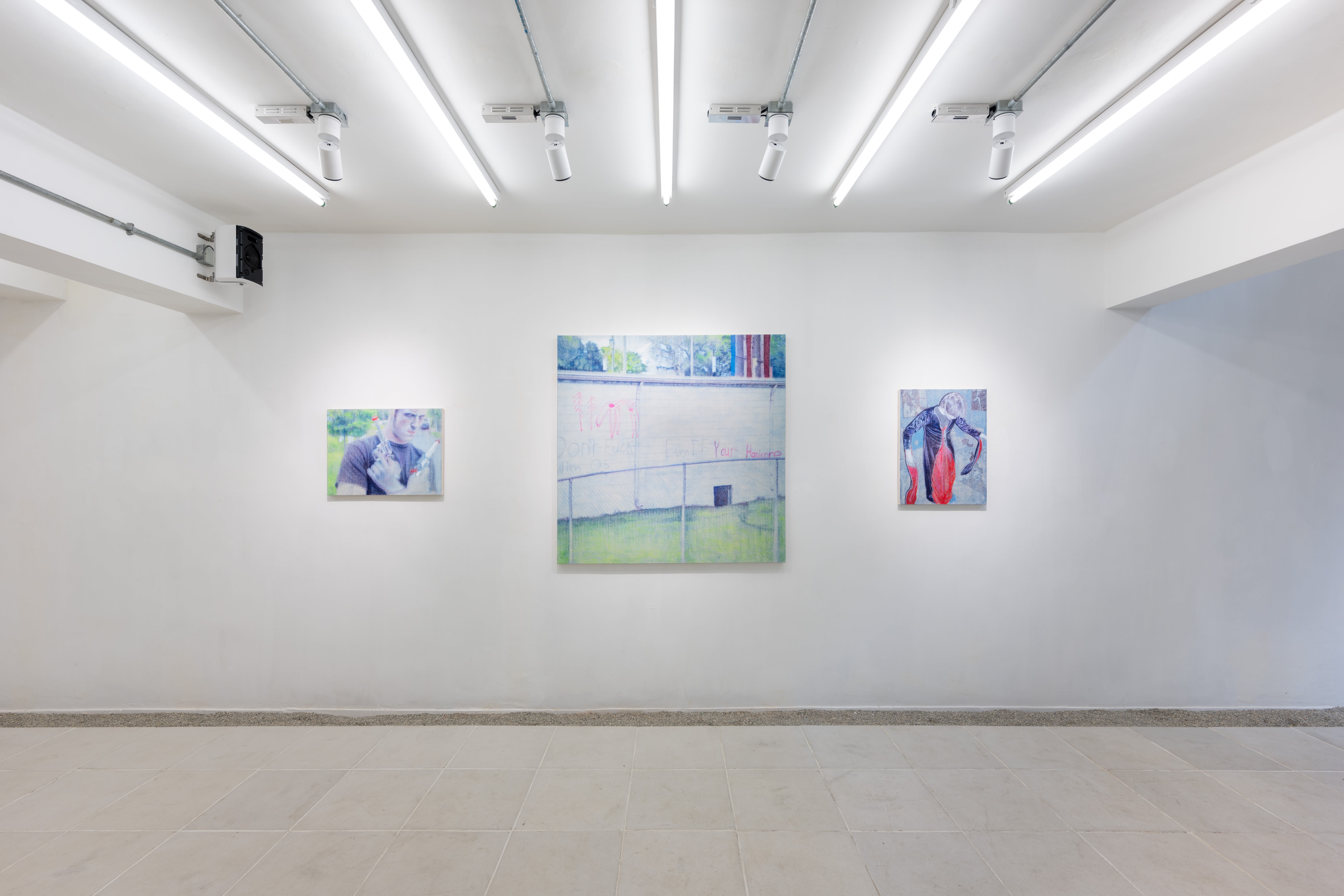
Portrait of Ronan Day-Lewis (image courtesy of the artist)
He first saw them one winter night.
Despite their unfamiliar origin, the images carry details that distinctly mark them as products of their time - the violent white flash, the distinctive red-eye effect, the grainy quality of the pictures are all indicative of the early 2000s. Faced with intangible memories expressed through tangible remains, New York-based artist Ronan Day-Lewis found himself arrested by the images of “American life”, capturing intimate moments of the banal and the mundane that served as the foundation of a recent past.
The images were from someone’s Flickr, a website that allows users to not only upload photographs but also sort them into galleries. As Day-Lewis slowly perused through the albums of unnamed faces and unspecified places, he felt as if his own experiences were converging with the strangers. “It was intuitive,” Day-Lewis said, “I gravitated towards images that elicited a feeling in me I couldn’t place. The photos I chose felt familiar to me even though I haven’t seen them before.” Within the various scenes of the Americana, he began finding stories amongst the pictures, speaking of a summer where they all lost their minds together.

American Life, Ronan Day-Lewis, 2024
Day-Lewis’s practice utilizes oil pastels on a textured canvas to create a gritty appearance akin to film grain. With cool tones such as blues, greens, and purples, his figures glow with a spectral aura. The most prominent image is the work American Life (2024), titled after the Flickr album of the same name. A boy appears to be suspended midair, caught between droplets of light within a black void. His head is thrown back in what Day-Lewis refers to as “a bodily bacchanal”, the canvas glittering with white orbs of water caught in the flash of the digital camera. The act of bouncing on a trampoline is a classic suburban experience, yet the photo encapsulates a very specific moment - of that particular boy on that particular night flying on the trampoline, a permanent fixture of that period in time.

The first time she saw one, Ronan Day-Lewis, 2024
Interestingly, the work that raises more questions than answers is a striking depiction of a Halloween party. Titled The first time she saw one (2024), the work illustrates three costumed figures in a darkened room - two of them smile at the camera as their eyes flash red, a visual reminder of the photo’s dated medium. However, the woman on the left stares into the distance, her expression unreadable. In that particular moment, her face strikes a confluence of both the viewer and the girls’ experiences, blurring the space between the past and the present within the space of the exhibition.
While his exhibition sought to capture the quintessential American teenage life in the early 2000s, Day-Lewis’s works have always revolved around his idea of Americana. Displayed along his new series are works illustrating natural phenomena such as tornados and storms, offering cool blue landscapes imbued with his personal emotions and memories of storm chasers. “[The Americana is] an amalgamation of my childhood impressions and an imagined America. I lived in the desert for a couple months when I was seven. I think that’s when I got really interested in America,” he said. Illustrated in long, horizontal canvases, each work is a snapshot of a storm, unbridled and unyielding gusts of wind swirling human emotions with natural phenomena.

Where The Cold Wind Blows, Ronan Day-Lewis, 2024
Another piece of himself that the artist imbued into his paintings is “the creature”, a ghostly being born from his imagination. From Halftime (2024) to Where The Cold Wind Blows (2023) to Hardcore (2024), audiences can find glimpses of the quadrupedal figure throughout the exhibition. “It just appeared,” said Day-Lewis, “I guess it was sort of a way to put myself in these strangers’ experiences. Or a way of understanding the spaces I was entering. Kind of an intrusion of the personal on the mythic.” A convergence of the artist’s personal experience with the stranger’s Flickr album, the process of creating these works was a new experience for Day-Lewis. “[It’s] hard to say what. It felt a little like I was losing my mind when I got deep into following these threads. I could feel the space between my own memories and the photographers’ collapsing, which was a kind of rush,” he commented. “I guess this was the first time I gave myself over completely to seemingly mundane images.”

Installation view of "That Summer We All Saw Them"
Amongst his other artistic ventures, Day-Lewis likens the process of painting to his experience in filmmaking. Unlike the latter, which Day-Lewis shared involves many other people in the creative process, painting is something he does in a room by himself. “The process of painting can deal entirely in feelings and images. Painting and film both involve making worlds that I want to go inside of,” he said.
“In this show particularly I was trying to think in terms of film language,” he added, “I want to write a film one day based on the people in these photographs. I hope the gap between the two mediums continues to shrink in my work.”


